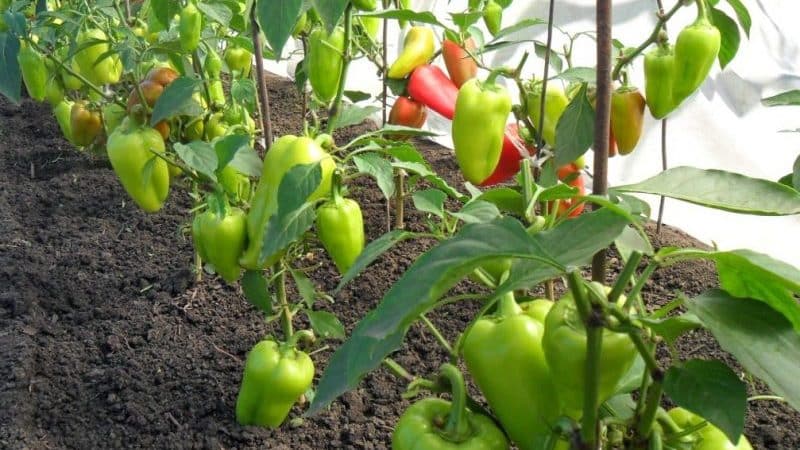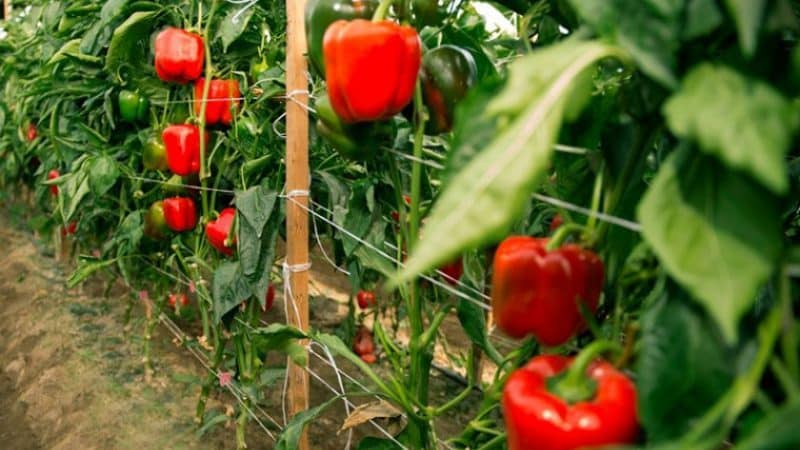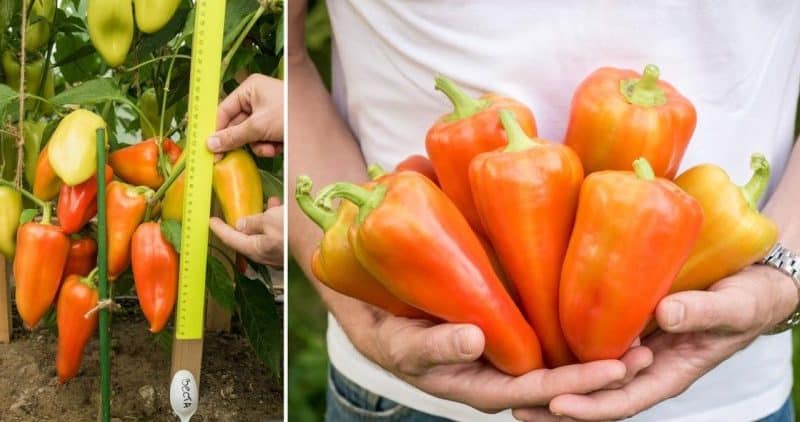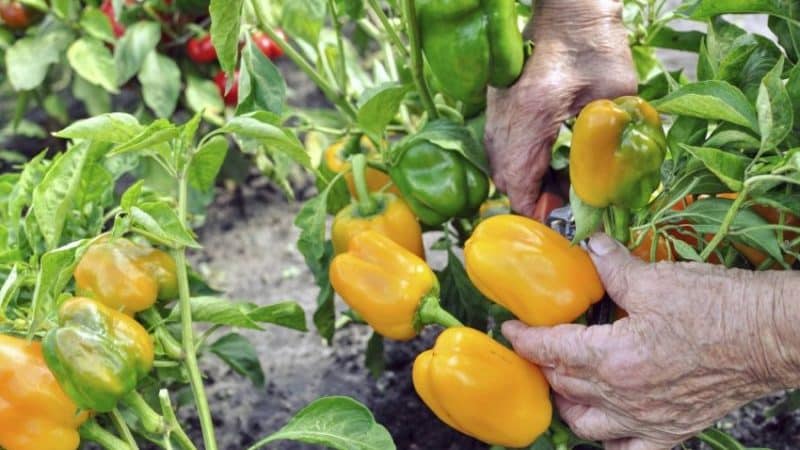When to pick peppers from the bush: harvesting on time
Pepper is a popular product; it is loved both fresh and canned. Thanks to breeders, this vegetable from South America became known to Russian gardeners. But growing a rich harvest is not everything; it is important to collect it on time and prepare it for storage.
When to pick peppers in open ground and in greenhouses, what factors influence ripening, how to prepare fruits for storage - you will learn all this from the article.
When to Harvest Peppers
Gardeners mainly grow sweet peppers on their plots. The season for collecting early varieties can open in early August. Mass harvesting of vegetables occurs at the end of August - September. But you can pick and eat the fruits when they reach their varietal size.
Collection time

There is no single harvest date for peppers. There are nuances on which the degree of fruit ripening depends.
Factors influencing harvest time:
- variety - early, late;
- variety of culture - bitter or sweet pepper;
- region of growth;
- weather.
Harvesting can be done according to biological and technical ripeness. Biological maturity is determined by the achievement of color, size and shape according to the characteristics of the variety. Technical - when the size corresponds to the variety, but the color and taste are insufficient.
Reference. Typically, the pepper harvest coincides with the harvest of tomatoes and eggplants.
The variety plays an important role in the ripening and further storage of the vegetable.Early peppers reach biological maturity 70-80 days after planting, late-ripening varieties - after 130 days or more.
Exact calculation
Each variety has its own period of technical ripeness. You can harvest early peppers 60-70 days after the growing season, mid-season peppers - after 90 days, late varieties - after 4 months. Between technical and biological ripeness 20-30 days pass, depending on the weather. The higher the air temperature, the faster ripening occurs.
Experienced gardeners harvest crops during the period of technical and biological ripeness. In this phase, fruits contain the greatest amount of sugars, vitamins and mineral salts. These peppers are suitable for fresh consumption and canning, however, they are stored worse than unripe ones.
The first harvest can be obtained in early August. The latter is removed before the onset of the first frost. During the entire season, 3-5 fruit harvests are carried out
Collection according to the lunar calendar
Many gardeners work on their plots according to the lunar calendar. The full moon is the best time to collect fruits that ripen above the ground. It is believed that these days the juices of the plant move to the top, filling the fruits with juiciness and taste.
Cleaning nuances
Environmental conditions play an important role in fruit ripening. Vegetables growing in open beds and in greenhouses have different harvest times.

In the greenhouse
Frosts are not harmful to fruits grown in a greenhouse. In closed beds, vegetable growers often set harvest dates themselves. The season may end with the onset of a consistently cold period. However, it is worth considering that a decrease in temperature indicators affects the plant, inhibiting its development and fruit ripening.
In the open ground
In open garden beds, weather conditions play an important role in the ripeness of vegetables. The plants are heat-loving and do not tolerate frost, so the fruits should be harvested before the first cold snap.
Important! Delaying the first harvest can lead to stunted plant growth, which will slow down the development of new fruits.
When is the best time to shoot?
The varietal characteristics of pepper determine its ripening period. Bitter and sweet bell peppers differ not only in appearance and taste, but also in the nuances of harvesting. If you remove the pepper at the wrong time, it may not have the best taste.

Hot pepper
Hot peppers can only be picked when they are fully ripe. If you remove it earlier, the fruit will not be spicy enough, since it acquires this taste quality only on the bush. The riper the pepper, the hotter it is.
Sweet (Bulgarian)
Each variety has its own ripening period. Sweet peppers can be harvested after reaching technical maturity - the fruit can ripen outside the garden during storage.
How to determine the degree of maturity
The ripeness of a bell pepper can be determined by the characteristic crackling sound of the fruit when touched. Depending on the variety, ripened fruits turn yellow, red, brown or purple.
Hot peppers can be removed as soon as the formation of the pods is completed. These fruits are suitable for fresh consumption. For canning and long-term storage, only those peppers that have reached biological maturity are used.
Signs of ripe hot pepper:
- bright color;
- the lower leaves of the plant turn yellow and dry out;
- the appearance of a burning sensation when rubbing the pod on the back of the hand.
Rules for harvesting and its further storage
When harvesting peppers, care must be taken as mistakes will lead to loss of harvest.
Instructions for harvesting peppers:
- When technically ripe, the fruits are selectively harvested every 6-8 days.
- Remove the peppers using scissors or pruners.
- For better storage, the fruit is cut off along with the stalk.
- When harvesting, you should be careful not to damage the branches of the bush.
- Peppers should be sorted according to size and ripeness.
To enjoy fresh vegetables for as long as possible, you need to properly organize their storage. Peppers can be stored for a month longer than tomatoes and eggplants.
Important! If stored poorly, the fruits begin to rot after just 2 days.
Characteristics of fruits for storage:
- technical maturity has been achieved;
- no mechanical damage;
- there are no signs of damage, cracks or dents.

Storage conditions
Thin-walled peppers should be stored in the refrigerator. Before sending it to freezing, part of the stalk should be cut off from the fruit, leaving its small tip.
For storage in basements and cellars, containers are used - boxes and plastic bags. Gardeners prefer bags because they do not allow air to pass through, which means vegetables are stored better. To extend the freshness period, each fruit can be wrapped in a layer of paper.
Requirements for plastic packaging: thickness - at least 120 microns, presence of a membrane with perforation on the side wall.
The temperature in the storage area for vegetables that have reached technical ripeness should not exceed 8-10°C with a humidity level of 80-90%. Under these conditions, the pepper will ripen in a month. To speed up ripening, it is moved to a warmer place.
Ripe fruits are stored at 1°C. Their ripeness will be reached in 2 months.Green varieties last longer than yellow or red fruits.
Important! Pepper should not be stored together with other vegetables, as it easily absorbs foreign odors.
Some vegetable growers prefer not to pick peppers from the bush. The plant is removed from the ground and hung upside down. Bushes can be stored in a shed or basement.
Conclusion
Pepper is one of the most popular crops in the garden. The fruits of this plant are consumed fresh and processed and can be stored for a long time. The harvest time is largely determined by the varieties. Choosing the right variety will help increase the shelf life of the fruit.
For fresh consumption, it is better to choose early, thin-walled fruits; for long-term storage, late varieties that have reached technical ripeness. The last harvest on open ground is harvested before the first frost; in greenhouses and greenhouses the season may end later.